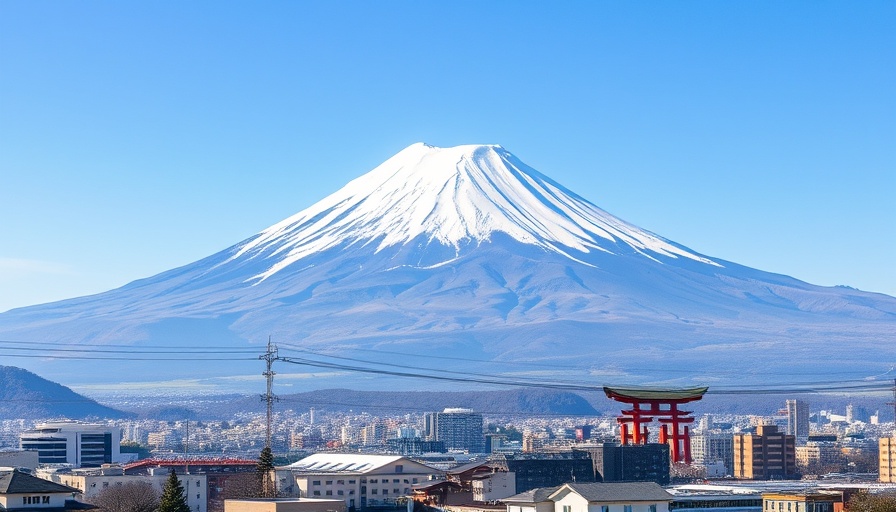
A Peculiar Rescue Story on Japan’s Iconic Mountain
Mount Fuji, renowned for its breathtaking views and cultural significance, has seen an unusual incident unfold recently. A 27-year-old student from China embarked on a journey to the summit, only to be airlifted not once, but twice within a matter of days. His quest? A cellphone left behind amidst the treacherous terrain of Japan's tallest mountain.
The Initial Incident: Fame for the Wrong Reasons
The adventure began on April 22 when the student found himself in distress due to altitude sickness, a common ailment that affects climbers who ascend rapidly to high altitudes without proper acclimation. After making an emergency call for help, he was airlifted from the Fujinomiya trail, an area known for its steep climbs and breathtaking panorama, situated approximately 3,000 meters above sea level.
According to police reports, the condition of the student was exacerbated by damaged climbing gear, drawing attention to the safety measures—or lack thereof—being considered by climbers who venture onto the mountain outside its official hiking season, which runs from July to early September. Although no formal penalties exist for climbing during the off-season, incidents like this underline the risks.
Returning to the Summit: A Risky Decision
Just four days later, the student made the decision to return to Mount Fuji, aiming to retrieve his lost possessions, including the elusive cellphone. Unfortunately, he again succumbed to altitude sickness, highlighting the perils climbers face when they underestimate the mountain’s intimidating conditions. This second rescue operation raised eyebrows about his judgement, considering the dangerous circumstances that had already led to a prior rescue.
Understanding Altitude Sickness: Science and Safety
Altitude sickness, medically known as acute mountain sickness (AMS), occurs when a person ascends to high altitudes too quickly. It results in various symptoms, ranging from headaches and nausea to more severe complications, including life-threatening conditions. For hikers and climbers, awareness and preparation are key to mitigating such risks.
Experts recommend gradual ascent, increasing elevation in increments, and ensuring proper hydration to decrease the likelihood of AMS. This case serves as a reminder of the importance of safety protocol that every climber should adhere to when pursuing mountainous adventures.
A Broader Perspective: Tourism and Climbing Culture in Japan
Japan’s cultural affinity for Mount Fuji makes this incident particularly poignant. The mountain is not just a geographical landmark; it holds a revered place in Japanese culture and spirituality. However, incidents like this reveal the necessity for enhanced tourism safety measures, especially for adventurers who may not be familiar with such environments.
Japanese authorities have recognized the viable risks involved and are exploring ideas like mandatory safety briefings for climbers and potential penalties for those who undertake the climb during off-hours without proper preparation. With the growing popularity of adventure tourism, ensuring the safety of climbers will be paramount as they navigate the rugged terrain.
Future Implications for Climbers and Emergency Services
This incident could prompt discussions about the protocols in place for emergency services in Japan. While rescue operations are vital, they also put considerable strain on local resources, which are already stretched thin during peak hiking months due to tourist influx. Adventure enthusiasts would benefit from understanding the implications of such rescues on community resources, leading to a greater appreciation for the environmental and social responsibilities involved in such pursuits.
Insights into the Psychology of Adventure
Returning for a lost item may seem trivial, yet this student’s decision underscores a deeper psychological aspect shared by many adventurers—the desire to conquer challenges, both physical and personal. This drive often leads individuals to push beyond conventional limits, exploring thrilling experiences that can sometimes result in detrimental consequences.
Adventure, while alluring, demands a fine balance between excitement and safety. Acknowledging these instincts can lead to strategies that promote awareness and safe exploration habits.
Conclusion: A Call for Responsible Adventure
The twin rescues of this young climber stand as a cautionary tale for adventurers everywhere. Mount Fuji continues to attract climbers worldwide, and through better education about altitude sickness, respectful acquaintance with safety protocols, and a thoughtful approach toward personal possessions, the climbing community can ensure that the breathtaking beauty of Mount Fuji remains a source of inspiration rather than despair. Adventure awaits, but caution should always accompany it.
 Add Row
Add Row  Add
Add 




 Add Row
Add Row  Add
Add 

Write A Comment